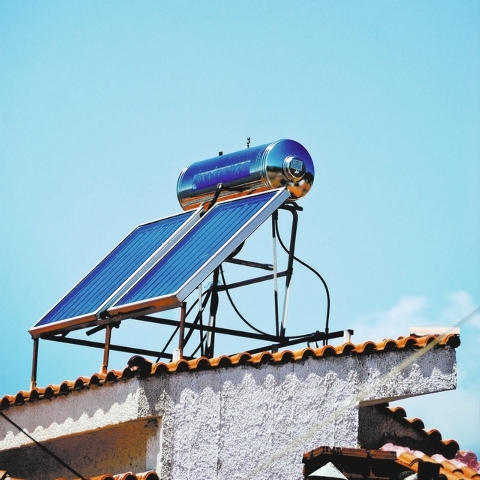History teaches that the use of solar energy is not new
It is common to think of a solar-powered home as something new and unusual. We’ve come to accept the idea that you cannot have comfort and convenience without paying a significantly large power bill.
That is the story of recent times. History tells a different tale.
Throughout most of human history, our species lived within a natural energy budget. Highly concentrated forms of ancient sunlight such as coal, oil and natural gas were mostly unknown and unavailable. Wood and other bio-based energy sources were the norm, but these resources were not always abundant. Throughout the ages in various cultures, logic and necessity came together to use the one common energy source.
Almost all life on Earth depends on solar energy, but not all humans have used it to its full potential. We know that more than 6,000 years ago, entire cities were designed to maximize the benefit of solar energy. Chinese, Greek and Roman history reveal occasional and sometimes widespread use of passive solar design principles to improve comfort and reduce fuel use.
In our own area, indigenous cultures built cliff dwellings in strategic locations to maximize solar exposure in winter. Over the past few centuries, several European countries built everything from lavish solar-designed royal mansions to entire solar communities.
As technology progressed, solar water-heating systems began to flourish. It’s hard to imagine but the U.S. had a thriving market for solar water-heating systems in the late 1800s. As they say, there is nothing new under the sun.
Modern homes, with their automated climate controls, hot water on demand and seemingly endless supplies of instant energy, make it easy to forget our connection with the sun and the value it can provide. We are surrounded by an abundance of solar energy, yet we act as if it is inconsequential. Our recent love affair with extracted energy has created a false sense of security that is increasingly dangerous.
If we combine the wisdom gathered over thousands of years of successful solar energy use with the capabilities of modern society, the potential is almost limitless.
Understanding the path of the sun and its relationship to our homes is the key to unlocking the true value of solar energy.
Dec. 21 marks the winter solstice in the Northern Hemisphere. Any day this week is a good time to spend some time noticing what’s happening as the sun enters your home throughout the day.
South-facing windows will have the deepest penetration of sunlight. These rooms will have abundant light and will be warmer. Tile floors and other forms of thermal mass can effectively absorb that energy and keep your home more comfortable using less energy.
Just as the ancients knew, when building or buying a home, put the emphasis on southern exposure for your main living spaces and windows. These same spaces will be most protected from summer heat since the sun is at its highest during the summer solstice.
Step outside and take a look at your south-facing roof. If it’s not shaded by trees or other buildings, you might have a good location for heating water, generating electricity or both. Renewable energy is an excellent home improvement and financial investment.
There are many things we can learn from the historical use of solar energy. The main one is that it works! Enjoy the solstice and open your solar awareness. You will be amazed at the difference it can make, now and well into the future.
Steve Rypka is a green living consultant and president of GreenDream Enterprises, a company committed to helping people live lighter on the planet. For more information and links to additional resources relating to this column or to reach Rypka, visit the webiste www.greendream.biz.

















